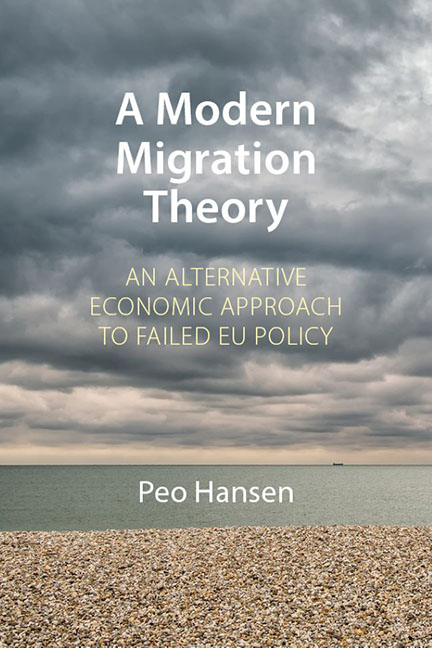Book contents
- Frontmatter
- Dedication
- Contents
- Preface and acknowledgements
- Foreword
- 1 Migration: the “mother of all problems”
- 2 The fiscal impact of migration
- 3 A modern migration theory
- 4 Demography, security and the shifting conjunctures of the European Union’s external labour migration policy
- 5 Labour migration in a sound finance policy logic
- 6 Why EU asylum policy cannot afford to pay demographic dividends
- 7 “We need these people”: refugee spending, fiscal impact and refugees’ real bearing on Sweden’s society and economy
- 8 Conclusion
- Bibliography
- Index
5 - Labour migration in a sound finance policy logic
Published online by Cambridge University Press: 20 December 2023
- Frontmatter
- Dedication
- Contents
- Preface and acknowledgements
- Foreword
- 1 Migration: the “mother of all problems”
- 2 The fiscal impact of migration
- 3 A modern migration theory
- 4 Demography, security and the shifting conjunctures of the European Union’s external labour migration policy
- 5 Labour migration in a sound finance policy logic
- 6 Why EU asylum policy cannot afford to pay demographic dividends
- 7 “We need these people”: refugee spending, fiscal impact and refugees’ real bearing on Sweden’s society and economy
- 8 Conclusion
- Bibliography
- Index
Summary
In the previous chapter I sketched the broad contours of the European Union's approach to external labour migration. In this chapter I will provide a more detailed description and analysis of the EU's legislation and actually existing policy in the area. As already clarified, the EU's supranational influence on external labour migration policy is very limited. Nevertheless, over the past couple of decades the European Commission has managed to get concrete policy on the ground, backed by a set of binding EU directives. These directives are the fruits of drawn-out negotiations and compromises between member states and EU institutions. As such, they help us ascertain the common denominators and conceptions underwriting the Union's external labour migration policy. Indirectly, they also help us get a sense of the stakes involved in national policy-making on labour migration.
Rather than following the common approach of mainly attending to the many and deep disagreements within the European Union on external labour migration, what I will do here is to look for the common ground. In other words, I try and answer the question: what are the consensual views that have made the actually existing common policy possible in the first place? Instead of getting stuck on the obstacles to common policies, then, I will focus on the enablers. I will do that not only to understand the dynamic and logic of the EU's ELM policy but also because I am convinced that these enablers offer us important clues as to what it is that disables the EU from working out an asylum policy focused on reception rather than prevention.
Of great significance, too, is the fact that the EU policy package contains both extremes in labour migration policy, as described in Chapter 4. That is to say, the EU has adopted policies covering both highly skilled (Blue Card) and unskilled labour migration (as part of a directive on seasonal migration). Consequently, a study of the EU's ELM directives also offers us the opportunity to analyse the differences with regard to the rights of welfare and residence that exist between the various categories of labour migrants.
- Type
- Chapter
- Information
- A Modern Migration TheoryAn Alternative Economic Approach to Failed EU Policy, pp. 95 - 114Publisher: Agenda PublishingPrint publication year: 2021



